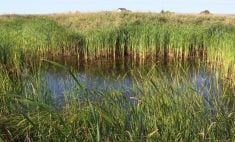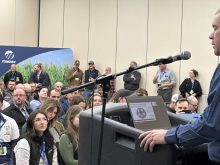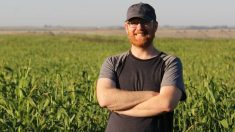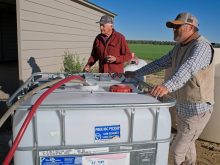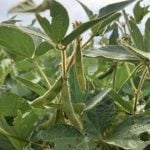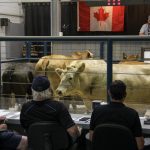A recent conference held on the subject of controlled traffic farming, or CTF as it’s more commonly known, has shown that the uptake in North America and Canada is somewhat behind that of northern Europe and Australia.
Held in Prague and organised by CTF Europe, the conference attracted more than 130 participants, including farmers, managers, industry professionals and consultants all keen to share their experiences with CTF. Trimble, Claas and Horsch also supported the conference.
First and foremost, controlled traffic farming is about reducing production costs, while at the same time increasing yields and improving soil health, explained Tim Chamen of CTF Europe. “It works on the premise that if it’s not broken, you don’t need to fix it. Primarily, soils are damaged by heavy machinery running all over them. So, if soil is not trafficked, then there shouldn’t be any compaction.
Read Also
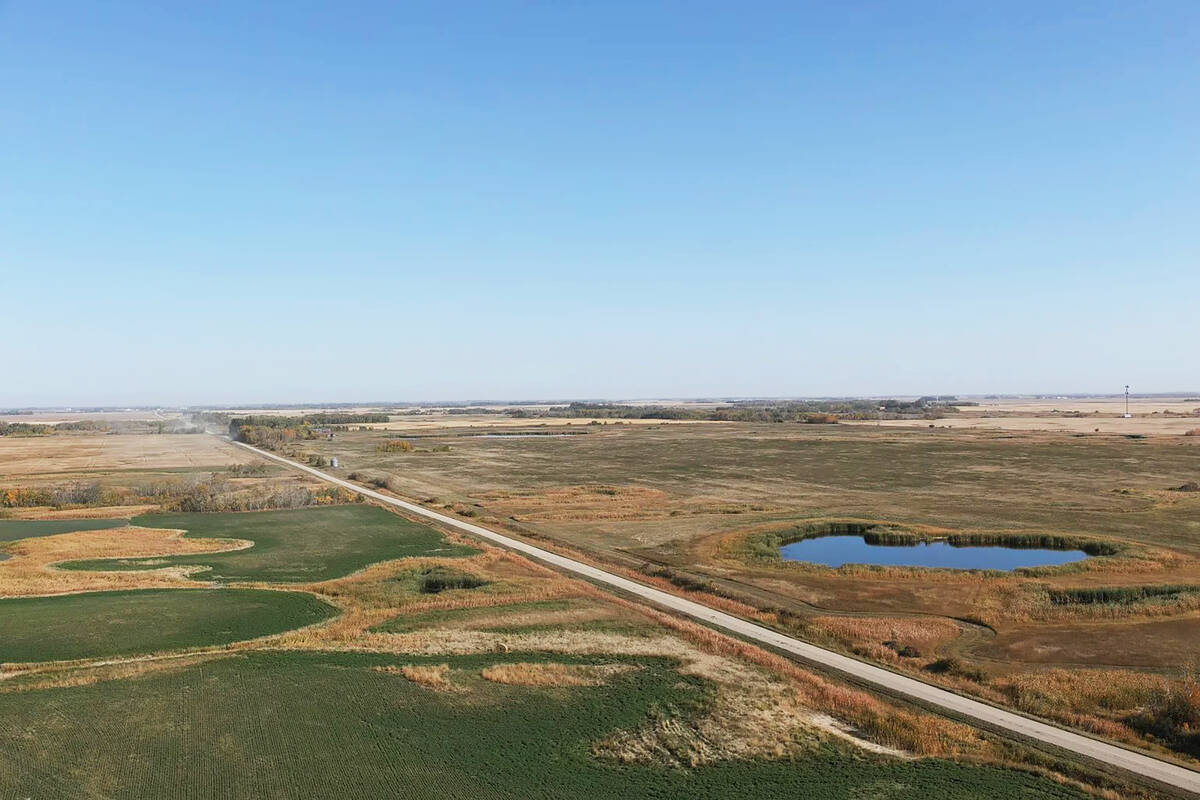
Turning excess water into an asset with consolidation drainage
After heavy rains flooded his yard, a Saskatchewan farmer turned to a consolidation drainage and irrigation project to better manage water on his land. Here’s how it works — and how the WSA and funding help make it happen.
“What CTF aims to do is to turn present production systems on their head by leaving 80 to 90 per cent of fields un-trafficked, hence reducing soil compaction significantly.”
Permanent traffic lanes are introduced, confining compaction only to these areas, leaving the rest of the field untouched. All of this hinges on GPS and RTK, or realtime kinetic correction.
There are several challenges that face growers looking to go down the CTF route. First is designing the system, which is largely based on your current machinery fleet, unless you have the luxury of starting from scratch. Systems are usually based around your combine tires and header width.
- More Grainews: Machinery manufacturer adopts CTF
Establishing where wheelways fall is also important for run off; drainage plays an important part in this.
It’s also obvious that most CTF systems are either no-till or non-inversion. However, it is crucial that the system in place can deal with residues, diseases and weeds when ploughing isn’t an option.
CTF in North America
Several Canadian farmers attended the two-day conference and farm tour, including Adam Gurr of Brannan, Manitoba. As well as farming, Gurr is studying for a Masters degree in controlled traffic farming at Iowa State University.
“I thought it would be an ideal opportunity to see the latest research and also to talk to farmers who are also using CTF on their own farms.”
Gurr farms 4,800 acres near Rapid City and Brandon with his father and brother-in-law. For the past 20 years the farm has been managed under a no-till strategy; this year will be the fourth that CTF has been in place.
The system had to fit in with the farm’s existing machinery fleet, which included a Claas Lexion 760TT with a footprint of 132 inches, explained Gurr.
The Case 4420 sprayer has a 120-foot boom and is on 132-inch wheel spacings. The Challenger MT 865 with 30-inch tracks is on 128-inch track gauge. The MT 765 with 18-inch tracks is set at 132-inch track widths. An 80 foot Seedhawk drills at 12-inch row widths and has 132-inch tracks.
For the most part the equipment wheel and track gauges are standardized. The air tank on the drill is not standardized, but most of the time will have an axle load less than 10 tonnes. In a 3:1 CTF system, seed drills are typically one-third the width of the sprayer; in this case the drill is two-thirds the width of the sprayer.
“The only exception is the 35 foot swather we use to swath the canola, but at the moment I am okay with that.
“We will have to see whether we have any issues with residue being effectively spread across the whole width, however we haven’t experienced any problems yet.”
On-farm research requires planning ahead, but modern technology, including GPS systems, makes it relatively simple, explained Gurr, who has also established Agritruth Research, an agronomic research company specialising in extensive farm-based testing.
“First and foremost I am a farmer,” he said. “However, I understand the benefits of large-scale research which is why we established Agritruth.
“One significant benefit is the improved trafficability since adopting CTF. Even in wet conditions we are able to travel with heavy machines, whereas before we would have got stuck.”
Out of the eight blocks Gurr farms under CTF, seven have yielded higher than those not under CTF, however, it’s important to take into account other factors before attributing this increase to controlled traffic farming.
“Without doubt we will continue with CTF even when the trial ends,” Gurr said. “It’s a logical progression from sprayer and drill tramlines.”
CTF research in Alberta
Controlled traffic farming (CTF), “reminds me of the no-till movement 20 years ago,” explained Peter Gamache of Controlled Traffic Farming Alberta. “There’s a lot of scepticism but also a lot of interest.”
In 2014 it was estimated that around 50,000 hectares of land were under CTF in the U.K., and two million hectares in Australia.
In North America, there are less than 50 famers practicing permanent CTF, although this is growing by the year.
“It’s difficult to come up with an accurate number, as lots of farmers use some form of CTF or another, such as sticking to the tramlines for spraying, etc.”
Gamache is currently heading up a University of Alberta CTF study running from 2014 to 2017, the second study since 2011.
With co-operative sites on farms throughout Alberta, the study involves farms using different CTF widths, with headers from 30 to 40 feet, and sprayers from 60 to 120 feet.
Plots are laid out with both random traffic and controlled, with imposed traffic being provided by a John Deere 9560 RT.
For most farms involved in the trial, capital investment was minimal at $20 per acre. All farms involved in the trial have built their systems around header size — 30, 35 or 40 foot table widths.
On trial sites, crop emergence for canola, wheat and corn was found to be very similar for both the trafficked and CTF plots, with some recording increases in plants per square metre.
CTF performs well in extreme weather conditions, including droughts and floods, concluded Gamache. “It also improves timeliness and efficiency as well as uniformity in terms of both crops and soil. CTF is the ultimate precision platform, and is much more than merely keeping to the tramlines.
However, there are some cons, he added. “It requires a higher level of management, sticking to a rigid system and yields haven’t improved so far in our trials.”
Another challenge is the availability of suitable machinery. Not all machines suit CTF systems, and some are completely incompatible. For example, tractors aren’t available with adjustable track widths like sprayers, making it necessary to fit spacers and in some cases invalidate warranties.
Both manufacturers and delegates agreed that machinery manufactures should consider CTF in some of their equipment to make it easier for farmers to adopt CTF successfully.







